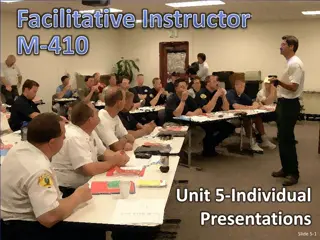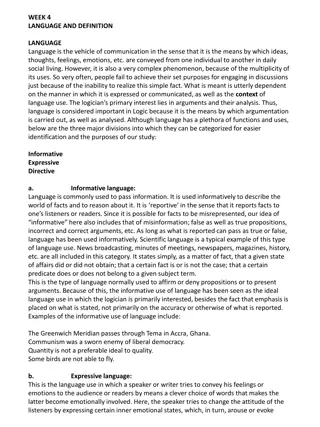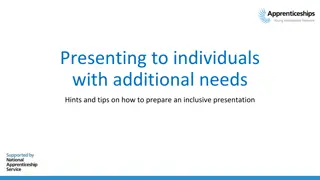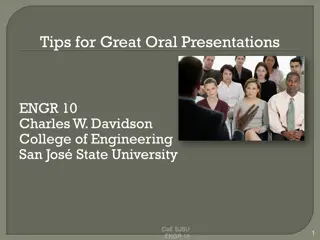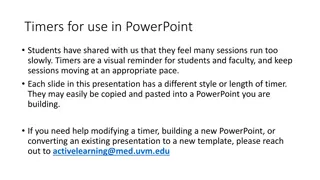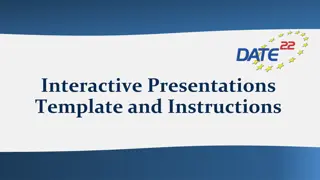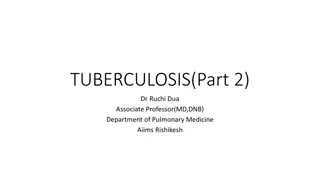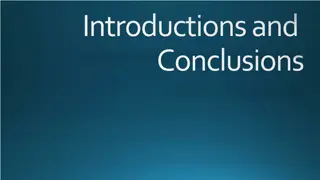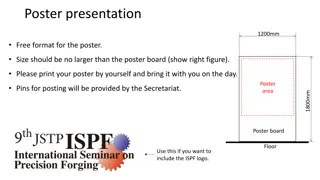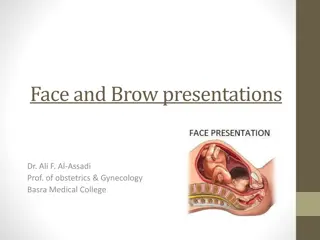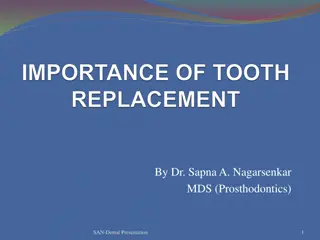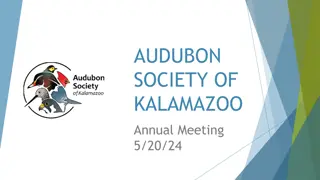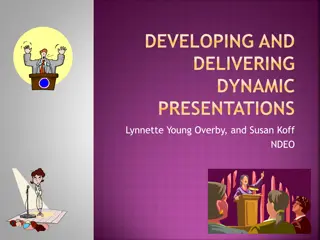Analyzing Information and Crafting Informative Presentations
Explore research methods, information organization, and MLA formatting for informative presentations on current news events. Understand the CRAP Test for evaluating sources and delivering clear, evidence-based reports to your peers.
Download Presentation

Please find below an Image/Link to download the presentation.
The content on the website is provided AS IS for your information and personal use only. It may not be sold, licensed, or shared on other websites without obtaining consent from the author. Download presentation by click this link. If you encounter any issues during the download, it is possible that the publisher has removed the file from their server.
E N D
Presentation Transcript
Unit Overview 0You will conduct research, analyze how authors organize information, explore MLA formatting, and make presentations informing your peers about a current news event *ACES project specific* Culminating Learning Experience: Presentation 0 You will present a news report on a current event *ACES project specific* - what it is, where and how it exists, and how it is being dealt with currently. 0 The presentation must include clear, concise, and logical line of reasoning and evidence from multiple sources. 0 It is not a persuasive report; you are simply informing the class
Task 1 Close Read Anchor Texts In groups, students will read a text set that includes various mediums related. They will analyze and evaluate each author s/speaker s point of view, reasoning and use of evidence (e.g., CRAP Test). Groups will present their findings to the class indicating their analysis and support with evidence.
#1 CRAP Test CN A way to grade sources using: 0Currency 0Reliability 0Authority of Author 0Authority of Organization 0Purpose
CRAP Test Currency: Is the information recent enough for your topic? 0 Has it been published in the last x years? (x will vary, depending on your topic)? 0 If you have a historical research topic, was it published around the date of the original event?
CRAP Test Reliability/Relevance: Where does the information come from, and does the information apply to your topic? 0 Is it a primary or secondary source? 0 Are methods or references provided? 0 Who published the information? 0 Was it peer-reviewed? 0 Does all of the information apply to your topic, or only part of it? 0 Is the information general or detailed? 0 Is the information balanced or biased?
CRAP Test Authority: Who authored this information? 0 Was it a single person or several people? 0 Was it a corporation or organization? 0 Are their credentials provided? 0 What is their reputation or expertise?
CRAP Test Purpose/Point-of-View: What was the intent of the author, and how is the author connected to the information? 0 Who is the intended audience? 0 Is the information intended to inform, persuade, sell, entertain, ? 0 Is this a first-hand account of an event or research? 0 Does the author have a vested interest in the topic?
Additional Questions for Online Sources: 0 What is the domain (i.e. .com, .org, .gov, .edu)? 0 Who is the site publisher or sponsor, and is this information easy to find? 0 Has it been updated recently? 0 Are there any advertisements or other distractions? 0 Could the site be ironic, like a satire or a spoof?
#2 Sugary Drink CRAP Analysis 0 Separate your paper into 6 sections 0 Take brief notes on each article decide which one is the best. 0 Explain each element of the CRAP test (in bullet points) for each article using your worksheet: 0 Currency 0 Reliability 0 Authority of Author 0 Authority of Organization 0 Purpose/Point of View 0 Give it a score using the CRAP test 0 Look at the examples on the wall
Task 2: Research into Current Event In a computer lab or independently, students will conduct research on an assigned or current event what it is, where and how it exists, and how it is dealt with currently with the end goal of informing their peers.
#3 How to Research Online 0 Create a list of keywords associated with your topic; consider synonyms or variant spellings. Use this list to help narrow search terms. Write them down and keep them with you throughout the research process. 0 Write down your topic: Does television viewing encourage aggressive behavior in children? 0 Write down the important words from your topic: television, aggressive, behavior, children. 0 Write down synonyms or related words from your list: television, T.V.; aggressive, fighting, hostile, angry; behavior, action, attitude; children, kids, tweens, teens, etc. 0 Simple search: television AND aggressive behavior AND children
#3 How to Research Online 0 Exact Phrase Searching: To look for an exact phrase, type your phrase within quotation marks ( ). The results will contain the exact words in the quotation marks. 0 Example: attention deficit disorder ? 0 Truncation to Expand your Search: Using an asterisk (*) or question mark (?) at the end of a root word (known as truncation or stemming), allows you to retrieve results containing any form of the root word. 0 Example: typing teen* will find teen, teens, teenage, teenager, teenagers
#3 How to Research Online 0 Boolean Searches:
#3 How to Research Online 1. Your Research topic: 2. Your Research Question: 3. Key words to search: 0Main words: 0Synonyms: 0Truncated words: 4. What will you type into Google?
#4 KQP Think about your topic what do you KNOW, what QUESTIONS do you have, and then share with your PEER and ask them what they know or questions they have about your topic: Know Questions Peer s Questions 1. 1. 1. 2. 2. 2. 3. 3. 3. 4. 4. 4. 5. 5. 5.
#5 Library Research 0 See notebook (doc camera)
#6 News Story Analysis Directions: Analyze two news stories about the same event Step 1: Annotate the Text 0 Chunk the text and number the main points of each section. 0 Left Margin: summarize main points 0 Right Margin: analyze usefulness/credibility 0 Highlight evidence of sequence of events
#6 News Story Analysis Directions: Analyze two news stories about the same event Step 2: CRAP Test 0 Using the CRAP Test, assess each article Step 3: Analyze the Articles 0 According to the story, what happened? 0 Who: 0 What: 0 Where: 0 When: 0 Why: 0 How: 0 Compare and Contrast the 2 articles. How are they similar? How are they different? 0 After analysis, which article is the most reliable?
#6 News Story Analysis Step 4: Share your findings 0 In small groups share the following about your articles: 0 Main idea/summary 0 CRAP score and rationale
#7 Research Log 0 As you research 1. Create a Works Cited entry for each source 2. Summarize the who, what, where, when, why, and how of each source.
Task 3: Narrative Essay Students will write a narrative essay analyzing a first person perspective of the current event happening (e.g., a farmer affected by the California drought).
#8 Narrative Techniques CN 0 Intro to Narrative PPT 0 Brushstrokes PPT (if time)
#9 Current Event Narrative 0 You will write a narrative essay analyzing a first person perspective of your current event 1. Pretend that you are someone involved in your current event 2. Think of a situation related to your current event 3. Write a story from the perspective of that person in that situation 4. Include: Exposition, dialogue, logical sequence of events, vivid details, and a reflective conclusion
Task 4: News Report Writing and Presentation Prep Students will write a news report after conducting research on a current event. They will look at the rubric for evaluating their Culminating Learning Experience presentations. They will use the rubric to practice their presentation skills with partners, and to objectively evaluate others presentations.
#10 Presentation Prep CN SIX-STEP GUIDE TO EFFECTIVE PRESENTATIONS 0 ORGANIZATION GUIDE 1. Excite Step 2. Launch Step 3. Relate Step 4. Inform Step Main Points 5. Reiterate Step 6. Energize Step 0 DELIVERY GUIDE 1. Use appropriate volume of speaking 2. Use variety in volume, rate, and pitch 3. Use appropriate pronunciation and articulation 4. Use appropriate eye contact 5. Use appropriate facial expressions, gestures, posture, and movements 6. Use minimal vocalized pauses (um, uh) or distracting mannerisms
Organization Guide 1. Excite Step (gain the audience s attention by introducing the topic in an interesting manner) Use a story, quote, joke, example, fact, statistic, question, demonstration, or presentational aid that introduces the topic in a clear and interesting way (here is what I am going to talk about) and gives the audience a purpose for listening (here is why my topic is important to you).
Organization Guide 2. Launch Step (tell the audience what they are about to hear) 0 State the specific purpose of the speech. 0 If appropriate, define terms, orient the audience to the topic by providing essential background information, allay any fears or reservations the audience may have about listening to information on this topic, and/or establish your credibility as an authority on this topic. 0 Present a specific overview of the main points of the speech. 0 If appropriate, tell your audience how you will be conducting a question and answer session and for how long; for example, Toward the end of my remarks, I will answer questions for five minutes, and then I will conclude my remarks.
Organization Guide 3. Relate Step (give the audience a purpose for listening) 0 Present logical and motivating information regarding how the audience can benefit from listening to information on this topic. 0 Use a transition into (or just after) the explanation of benefits that focuses attention on the importance of the information. Use statements such as This information is important to you because . . . or For these reasons, you can benefit from reflecting upon these ideas.
Organization Guide 4. Inform Step Main Points (inform about the topic and use transitions) 0 Organize your main points in a logical manner. 0 Use supporting materials such as stories, quotes, jokes, evidence (authority testimony, examples, facts, and statistics), audience participation, demonstrations, and presentational aids to present your ideas in a clear and interesting way. 0 Use appropriate transitions between the steps of the six-step guide and between main points and subpoints.
Organization Guide 5. Reiterate Step (tell the audience what they have heard) 0 If you conduct a question and answer session, ask for questions after finishing the last main point and before beginning the reiterate step. Use a statement such as I will now answer questions for five minutes, and then I will conclude my remarks. Are there any questions? Finish the question and answer session by thanking the audience for their questions. Use a statement such as Thank you for your questions. I enjoyed responding to them. 0 Use a transition into the reiterate step that focuses on the fact that the speech is coming to an end and restate the specific purpose of the speech. Do not transition into the reiterate step by saying in conclusion, in closing, in summary, or to reiterate. This signals the audience to leave physically and mentally. Be subtler. Use a statement such as I discussed with you today. . . . 0 Provide a clarifying summary of each of the main points of the speech. Do not merely repeat what you said in the specific overview of main points in the launch step. Do restate your main points, but go a step further and restate a few important ideas or complex ideas (ideas that may have been more challenging to explain and/or understand) from each of your main points. Include the ideas that you most want your audience to remember. Do not include any new ideas in the summary.
Organization Guide 6. Energize Step (bring the speech to a satisfying close for the audience) 0 Use a story, quote, joke, example, fact, statistic, question, demonstration, or presentational aid that highlights the importance of the topic and how the audience can benefit from the ideas presented. You might refer back to the attention getting technique that you used in the excite step. 0 End with a topic-related definite final statement that encapsulates the specific purpose of the speech and ensures that the audience perceives that you have finished the speech. 0 If appropriate, add a statement that refers to the occasion or to the audience. For example, I enjoyed speaking with you today or I look forward to hearing the rest of your speeches.
Delivery Guide 1. Use appropriate volume of speaking: 0 Be sure that your audience can hear you. 0 Look to the audience for cues as to whether your volume of speaking is appropriate (either too loud or too soft). 0 Be aware that your voice will sound louder to you than it will to the audience. 0 You might ask an assistant to send you a signal if you cannot be heard easily.
Delivery Guide 2. Use variety in volume, rate, and pitch: 0 Develop an oral/conversational speaking style. You want to sound said not read, even when you choose to read from a manuscript. Your style should be much like normal professional conversation. 0 Raise or lower the volume of your voice and vary your rate and pitch of speaking according to the thoughts and feelings that you are trying to communicate in an effort to clarify and create interest in them. 0 Use pauses to separate words into meaningful thought units, to emphasize ideas, to give the audience some time to absorb your message, and to add drama to your speech. 0 Unless you are asking a question, be sure pitch level drops at the end of words, phrases, or sentences. You will sound more confident in yourself and in your message.
Delivery Guide 3. Use appropriate pronunciation and articulation: 0 Use proper sound and accent. 0 Be sure to research the proper pronunciation of words. Consult the diacritical marks in a dictionary. You will lose credibility fast if you mispronounce words. 0 Use the respelling technique (spelling the word the way it sounds or is pronounced) for difficult to pronounce names and terms. 0 Enunciate your words clearly and distinctly.
Delivery Guide 4. Use appropriate eye contact: 0 Use as much eye contact as possible. 0 Practice your speech using your outline, note cards, manuscript, and/or presentational aids. Whatever form your notes take, be sure that they truly serve as an effective aid to your memory. 0 Look at individuals in the eyes for approximately three to five seconds at a time. 0 Establish eye contact with the entire audience not just those sitting in the front and in the middle of the audience; that is, look at audience members who are sitting in the front far left and front far right seats as well as audience members sitting in the back far left and back far right seats.
Delivery Guide 5. Use appropriate facial expressions, gestures, posture, and movements: 0 Animated and enthusiastic physical behaviors usually engender a positive response they make a speech more interesting to listen to and easier to understand, and they help to release pent-up energy and to communicate that the speaker knows and cares about the topic. 0 Relax and let your facial expressions and gestures be a spontaneous reflection of your inner state of thinking and feeling. 0 Raise your hand when using a question to poll the audience. The audience will then know exactly the response you are looking for without having to use the phrase by a show of hands or raise your hand if. 0 When not gesturing, let your hands fall naturally to your side, keep your arms waist level and let one hand rest naturally on the other hand, or let them rest on a table or podium that you might be using. 0 Use a confident, poised, and natural posture. Keep both feet flat on the floor and shoulder length apart. Place equal weight on both feet. Be sure to square your shoulders to the audience. 0 Move on transitions or to manipulate presentational aids. 0 Avoid random movements, pacing, swaying, and turning your back to the audience.
Delivery Guide 6. Use minimal vocalized pauses (um, uh) or distracting mannerisms: 0 Using vocalized pauses is simply a bad habit. Record yourself on audio or videotape, and see if you use distracting vocalized pauses. Once you are aware of the problem, you will feel yourself about to use a vocalized pause. When you do, simply pause, think about what you are saying, and then continue presenting your thoughts. 0 Avoid distracting mannerisms like playing with your hair, scratching your head or the back of your neck, pulling on your earlobe, jingling coins in your pocket, taking your hand(s) in and out of your pocket(s), taking your glasses on and off, tossing a pen in the air, overusing a particular gesture, or perpetual motion.
#11 News Report Rough Draft 0 Using the guidelines and tips for effective organization, write your rough draft of your News Report: 1. Excite Step 2. Launch Step 3. Relate Step 4. Inform Step Main Points 5. Reiterate Step 6. Energize Step
#12 Speech Assessment Use the rubric to evaluate: Peers Videos My Speech
#13 Unit 3 Reflection What did you like about the unit and would want to do again? What would you have changed about this unit or how would you improve this unit if we had to do it over again? What is the most memorable or interesting thing you have learned this unit? What advice would you give to a freshman next year? 1. 2. 3. 4.




